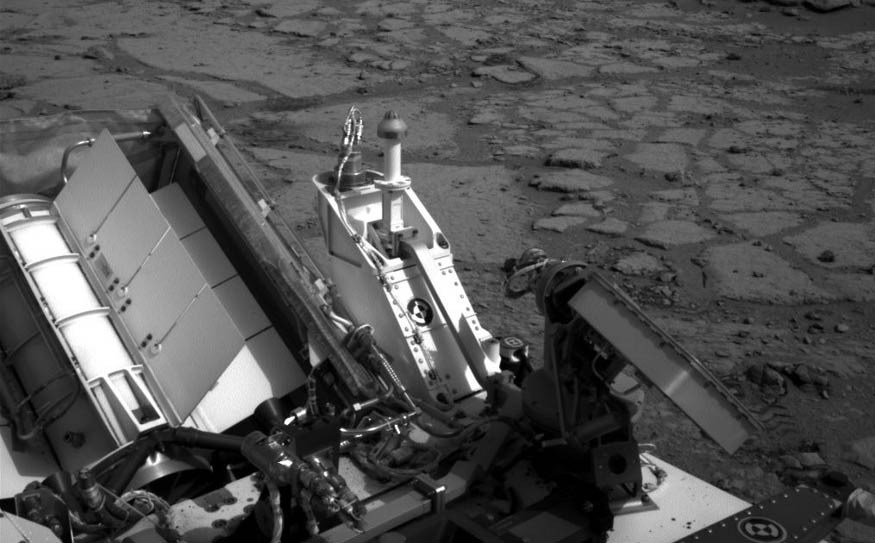There was big news out of Yellowknife Bay last week.
While the name of the bay might have most thinking the location is northeast of Whistler in the Northwest Territories, the place is actually much, much farther away. The Martian bay, along with nearby Mount Sharp, is impossible to get to at the moment and the only reason we know anything at all about these places is due to the work of people like Jim Meyer.
When Meyer isn't skiing or hiking in the corridor, he spends significant amounts of time keeping up to date on any news coming from Yellowknife Bay and other corners of the universe. Meyer is a retired National Aeronautics and Space Administration (NASA) employee who lives and plays in the mountains around Squamish and Whistler. His friends call him "NASA Jim." While working as an engineer for NASA he was involved in 162 space missions and played a key role in getting the rovers known as Spirit and Opportunity to Mars.
Spirit is out of commission now but Opportunity continues to probe the surface of the red planet nine years after landing. Curiosity, the bigger cousin of Spirit and Opportunity, joined the fun on Aug. 5, 2012 by dropping into Yellowknife Bay to determine if water once existed in that area.
Meyer spoke to an audience of about 30 on March 11 at the Royal Canadian Legion in Squamish, the night before the big NASA news conference to announce findings after Curiosity became the first space vehicle to drill into a rock on another planet. Meyer talked about his early career with NASA and the launch of Curiosity.
The latest pictures and experimental results from Curiosity have presented the strongest evidence yet that there was water on the fourth planet from the sun. The team studying the Martian surface with Curiosity's help includes Mariek Schmidt of Brock University in Saint Catharines, ON. Schmidt and his colleagues have reported that a drilling sample taken from Mars last week has confirmed there are sedimentary rock formations on Mars. Water plays a key role in the formation of sedimentary rocks.
NASA also announced on March 12, based on research done so far on Mars, that ancient Mars could have supported living microbes.
The Curiosity rover, which is about the size of a VW Beatle, touched down on Mars after an eight-and-a-half-month flight from Earth. Meyer, retired at the time, was at the launch of the rocket that got Curiosity off the surface of Earth and on its way.
According to Meyer, Curiosity landed in an area known as Gale Crater. He explains that the location was chosen after three years of research.
"It was because of the variety of terrain in there," says Meyer.
"There's one area where they see three diverse geological-type surfaces merging from Mount Sharp."
He reports suspected riverbeds were noticed in the chosen area.
The 2003 launch of Spirit and Opportunity and their landing on Mars came near the end of Meyer's career with NASA. The two rovers were expected to operate for three months and while Spirit hasn't phoned home since 2010, Opportunity continues to soldier on. It has travelled 35km across the surface of Mars collecting data.
Information gathered by Opportunity gave us evidence to suggest that water long ago soaked the ground and flowed across the surface of Mars and Curiosity's discoveries have built on those original findings.
John Callas, manager of NASA's Mars Exploration Rover Project, is pleased with the work of the overachieving Martian mountain climber.
"What's most important is not how long it has lasted or even how far it has driven, but how much exploration and scientific discovery Opportunity has accomplished," said Callas in a recent NASA news release.
Opportunity continues its marathon exploration of Mars and Curiosity plugs away on its mission, which is expected to last two years. Meanwhile, Meyer is already looking forward to November when NASA's next launch will take place. Maven will be launched into space on a mission to study the atmosphere of Mars. Every two years Mars and Earth are on the same side of the sun. We are coming up to the time when the two planets are closest to each other. The best time to launch a mission to Mars is when the planets are near each other.
Between now and then Meyer will keep track of updates from Commander Chris Hadfield on the International Space Station along with news from the Cassini spacecraft above Saturn. Other exploration missions Meyer and other space enthusiasts are monitoring include the Juno mission at Jupiter, the Dawn spacecraft checking out the asteroids known as Vesta and Ceres along with Voyager 1 and 2 studying Jupiter, Saturn, Neptune and Uranus. Voyager 2 is currently making its way beyond the edge of the solar system, where no spacecraft or human-made object has ever ventured before.
Meanwhile, Meyer will be watching for further news from Curiosity as it continues to explore the terrain in Yellowknife Bay.




